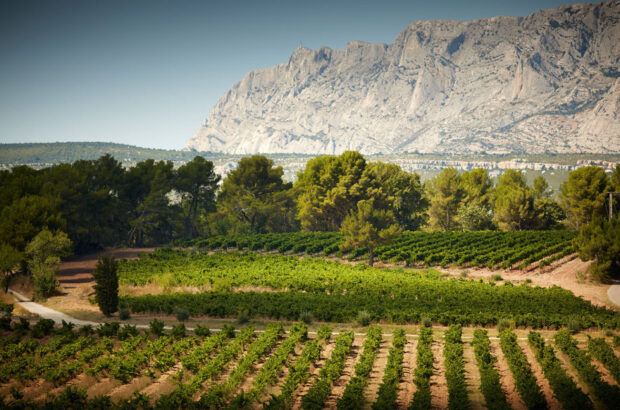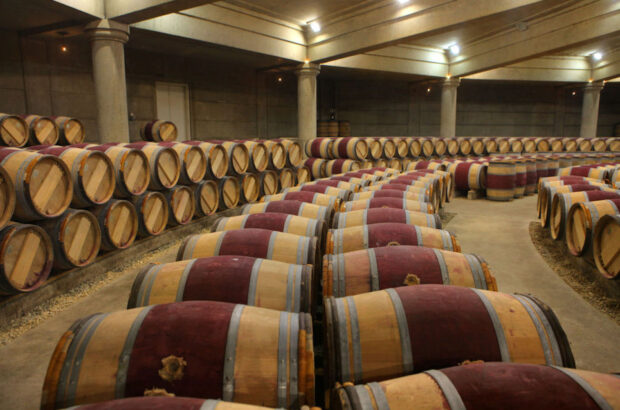On the cusp of retirement after more than four decades of working in whisky, Johnnie Walker Master Blender Dr Jim Beveridge OBE is showing no signs of running low on energy or enthusiasm just yet. As we taste through the Masters Series – three of the rarest blends ever released in the Walker name – he forsakes his usual quiet eloquence for something approaching childlike wonder.
‘This one – wow! It’s lovely, it’s just amazing.’ And later… ‘Wow, that’s quite different – you get the smoke with this one.’ And finally… ‘Different again. Kind of vanilla… sweet fruitiness. Just amazing!’
On another’s lips, those ‘wows’ and ‘amazings’ might sound self-indulgent, but there’s no disguising Beveridge’s unaffected sincerity, especially as there’s also no hint of these being ‘his’ whiskies. It’s always about the blending team, collective responsibility and sharing the credit. A total of 12 people work on Johnnie Walker, and one of them, Emma Walker, succeeded Beveridge as Master blender on 1 January.
We’re tasting and talking in the vaults of the multi-million-pound Johnnie Walker Princes Street visitor attraction in Edinburgh. The swansong of Beveridge’s career making the world’s best-selling whisky is the launch of Johnnie Walker Masters of Flavour, a £20,000, 48-year-old blend that concludes the Masters Series. The others, also on the table between us, are 50-year-old and 40-year-old whiskies (see below).

Emma Walker and Dr Jim Beveridge
Early days
It’s an event, and a location, that encapsulates whisky’s luxury status, but it wasn’t like this when Beveridge started work as a chemist researching flavour compounds in whisky in 1979. Within a few years, Scotland’s most famous industry was on its knees, laying off workers and closing distilleries up and down the country.
‘When I joined the industry, it was just about to fall,’ he recalls. ‘And I suppose that hard lesson has influenced the way I think – even today. It was a very difficult time, but the big lesson was about staying connected with our consumers.’
Blending whisky is often referred to as a discipline at the intersection of art and science. In its simplest form, it’s the combination of malt and grain whiskies to create something harmonious, complex and enjoyable. So is the process, I ask, a bit like solving a jigsaw puzzle?
‘The puzzle analogy assumes there’s an answer,’ Beveridge replies drily, after a characteristic few seconds of thought. ‘Actually, in this case it’s just what you believe the whisky should be like, and that’s down to the individual blender and the blending team,’ he adds.
‘Each of these,’ he gestures to the three glasses in front of us, ‘represents decisions made by the blending team as to what they believed the blend should be like, using just a handful of samples drawn from our stocks. There’s more to it than just looking at the flavours; I think it also reflects where the blending team were at when they created them.’
Meet the Masters
So the first in the series, the 50-year-old John Walker Masters Edition, is quintessential Walker with its dry smoke and ripe orchard fruit. Intriguingly, there’s no classically peated whisky in the blend – the profile is the result of so many more malts being smoky at that time.
The second, Johnnie Walker Master’s Ruby Reserve, is altogether lighter, sweeter and fruitier, with a sumptuous, velvety character that you only get from older grain whiskies. The last, Johnnie Walker Masters of Flavour, combines elements of them both, balancing sweet fruit with a lingering thread of savoury smoke.
The result is a trio of exceptional whiskies that turn the head not just for their quality, but also for their scarcity. Are they as much fun to put together as, say, the core Johnnie Walker expressions?
‘Well, they’re all fun,’ says Beveridge. ‘I think I enjoy the challenge of them all. There’s a lot of work that goes into Red Label, Black Label, Blue: those are the kind of linchpins, and there’s a job there to keep them on track. Then you move into innovation and thinking about new expressions for consumers, like this.’
While their cost and rarity place them beyond the reach of many, the Masters Series whiskies give the lie to the lazy prejudice, still believed by so many, that single malts are inherently superior to blends.
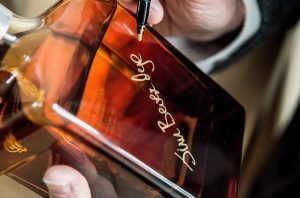
Signing off
‘You have to accept that’s what people feel,’ Beveridge says, before pointing to his glass of Ruby Reserve: ‘But I can’t believe I could find a single malt that could match that blend. You just couldn’t get a single malt to taste like that, because single malts are one-directional, they talk about a particular flavour style,’ he explains.
‘It’s kind of counter-intuitive, but quite often by adding a grain whisky to a malt you reveal flavours that you can’t get with a single malt. To dismiss the blend, I think, is to miss out on an amazing opportunity to experience quite unique expressions of flavour that you find in whisky.’
After so long as one of the great champions of blended Scotch, what does retirement have in store? ‘I think I need a break,’ Beveridge says. ‘Then… I’m not sure. But I think I’ll find it difficult to let go, so I’d quite like to keep in touch in some way. I haven’t really decided.’
There’s always the sheep to keep him busy. ‘Yes! I’m very lucky because I live on a farm, which I enjoy, so there’s always lots to do. I’m looking forward to spending more time there. I’m very lucky, I really am.’
Tasting notes: Johnnie Walker Masters Series
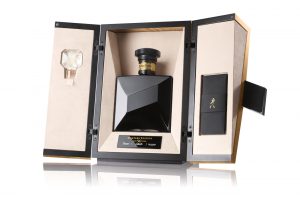
The John Walker Masters’ Edition
A 50-year-old blend of six distilleries – five of them no longer operational. In stylistic terms, this is the most obviously ‘Walker’ of the three Masters, with persistent, dry smoke enveloping orchard fruits. Powerful, linear and, once that smoke grabs you, it doesn’t let go. In time, there’s a more aromatic, savoury earthiness that’s almost meaty. Released in 2018, priced at US$25,000 and limited to 100 bottles. Alcohol 43.3%

Johnnie Walker Master’s Ruby Reserve
A 40-year-old blend of eight distilleries, this is a sumptuous, opulent whisky. Port Ellen and Talisker give a maritime accent, but they’re content to cede the limelight to the sweet, rich grain whiskies and the ripe tropical fruit of Pittyvaich and Glendullan. Sweet and faintly smoky, but nothing is allowed to dominate, making for an astonishingly complex and balanced blend. Released in 2020, priced at £15,000 and limited to 398 bottles. Alc 43%
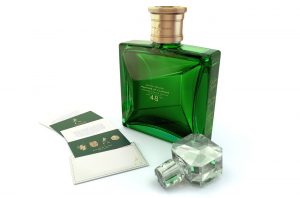
Johnnie Walker Masters of Flavour
This 48-year-old blend of seven distilleries falls stylistically somewhere between its predecessors. There’s rich, dark fruit, plus vanilla-scented, mouthfilling grain. Then billowing wafts of dry smoke emerge, adding a savoury edge to the unctuous cocktail of syrupy fruit that lifts and freshens on the finish. Released in 2021, priced at £20,000 and limited to 288 bottles. Alc 41.8%





